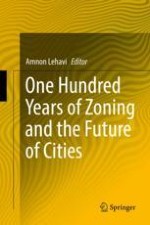2018 | OriginalPaper | Chapter
Community Benefits Agreements: Flexibility and Inclusion in U.S. Zoning
Author : Gerald Korngold
Published in: One Hundred Years of Zoning and the Future of Cities
Publisher: Springer International Publishing
Activate our intelligent search to find suitable subject content or patents.
Select sections of text to find matching patents with Artificial Intelligence. powered by
Select sections of text to find additional relevant content using AI-assisted search. powered by
